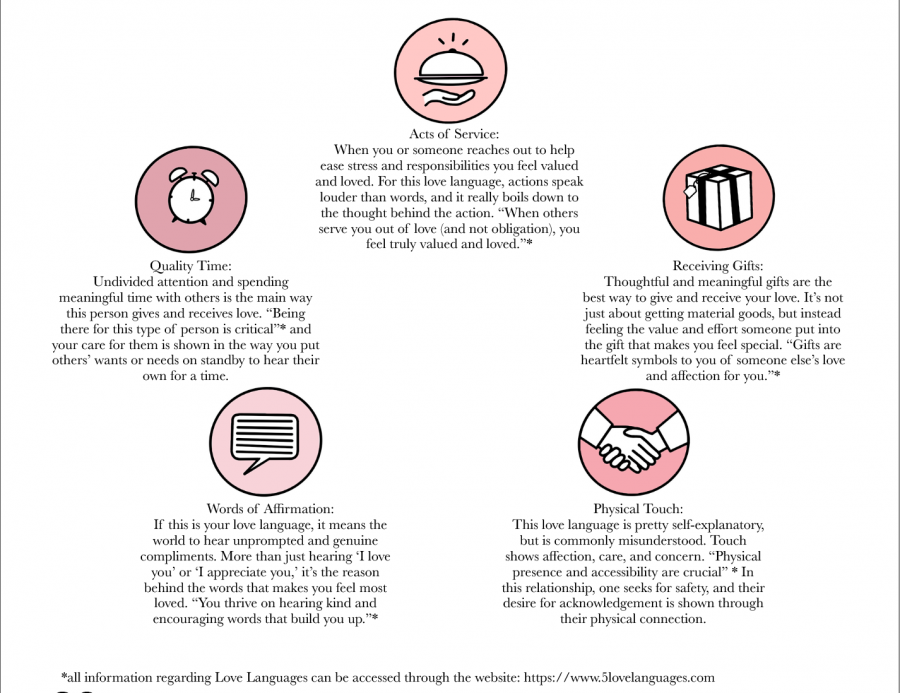A Lesson in Love
An explanation of the love languages and their influence
All connections are formed on the basis of some form of communication. The way an individual communicates their love is unique to them. Whether it’s with a significant other or among friends, knowing yours and others’ best form of communication can help create healthier and happier relationships.
There are five main forms of communication known as love languages. They are listed, in no particular order, as the following: words of affirmation, acts of service, receiving gifts, quality time, and physical touch.
Knowing your love language is important, as well as knowing the languages of those who are close to you, but one’s love language isn’t set in stone, and it’s not a compatibility chart that predicts the personality of others in your relationships and who you will love. You don’t have to have the same love language to maintain a close and healthy relationship. Meaningful relationships are formed through effective communication and mutual trust, not just a love language. Likewise, most people have multiple love languages, meaning they feel and offer affection in multiple different ways.
Although it is helpful to understand love languages, relying solely on one to form relationships can be dangerous. Using a love language as a requirement and or baseline in life leads to a closed mindset and inability to be changed and to see change. If you come to focus only on the five main types of love, you miss the other ways and opportunities of expression. Understanding the fluidity and natural processes of human change, especially in regard to displaying emotions, allows for the adoption of an open mindset and thereby, further growth.
Your donation will support the student journalists of Francis Howell Central High School. Your contribution will allow us to purchase equipment and cover our annual website hosting costs. FHCToday.com and our subsequent publications are dedicated to the students by the students. We hope you consider donating to allow us to continue our mission of a connected and well-informed student body.












